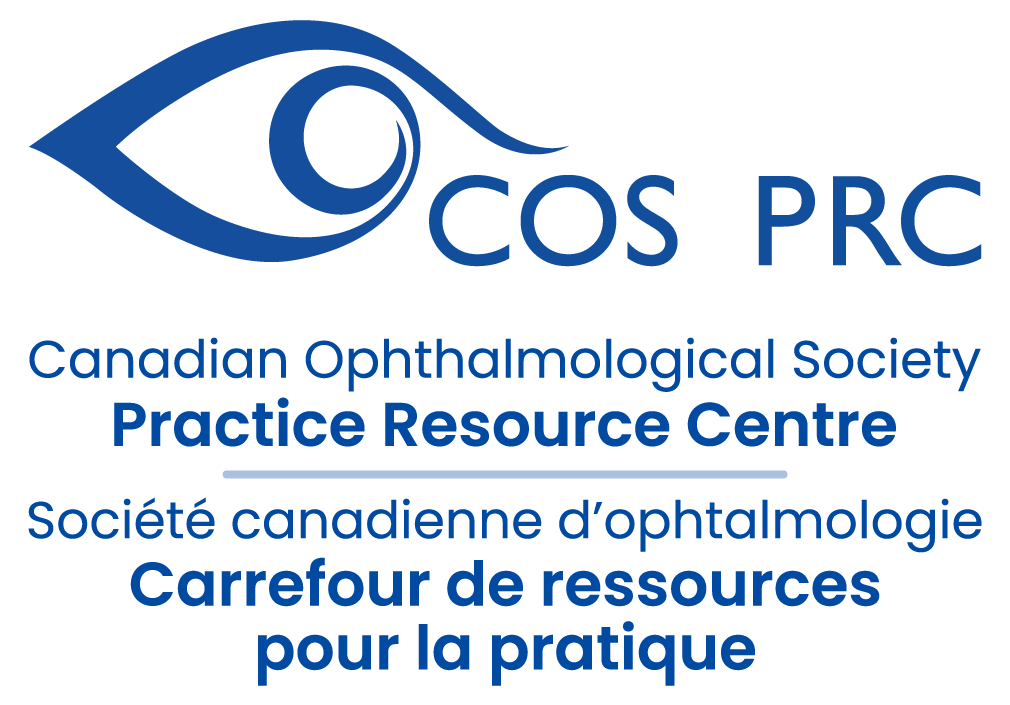Position Statement
November 2016
Summary
Retinitis Pigmentosa (RP) is part of a group of rare genetic disorders that cause slow but progressive degeneration of photoreceptor cells in the retina. RP symptoms typically begin in childhood with decreased night vision, followed by loss of peripheral vision, and can eventually lead to complete loss of vision. There is currently no cure for RP.
Since 1992, doctors in Cuba have offered a treatment for RP at an initial cost of just over $10 000 CDN. The Cuban treatment comprises eye surgery, ozone therapy, electric stimulation, and drugs. However, no independent, peer-reviewed studies have been conducted to date that demonstrate the Cuban treatment improves or stabilizes retinal function.
The Canadian Ophthalmological Society does not recommend the Cuban treatment for patients with RP due to the absence of objective, peer-reviewed evidence to support its efficacy, safety, and the fact that in some cases the treatment appears to have worsened patients’ RP symptoms.
Full Position Statement
Retinitis Pigmentosa (RP) refers to a group of rare genetic disorders that cause slow but progressive degeneration of photoreceptor cells in the retina. RP affects approximately 1 in 3500 Canadians.1 RP symptoms typically begin in childhood with decreased night vision, followed by loss of peripheral vision, and can eventually lead to complete loss of vision. RP typically affects both eyes and ranges in severity from no visual problems in some families to early blindness in others. There is currently no cure for RP.
Since 1992, doctors in Cuba have offered a treatment for RP, which is available at a cost of $10 000 CDN for the initial treatment, plus $4900 CDN for each subsequent annual ozone treatment.2 The Cuban treatment is open to anyone seeking treatment, both locally and internationally, and is comprised of the following:
- Eye surgery: A flap of orbital vascular adipose tissue is inserted into a sclerochoroidal pocket at the temporal side of the eye. The theory behind the surgery is that it will increase blood flow, which will stabilize the progression of RP. However, our current knowledge, based on continued research, indicates that RP is a cellular disease, not a disease of blood circulation.2 Several complications have been reported, including photophobia, strabismus with diplopia post-operatively, and inadvertent rupture or perforation of the scleral wall during surgery.3,4
- Ozone therapy: Post-surgery, ozone is administered to patients for 14-21 days, either rectally or via the bloodstream. The theory behind the ozone therapy is that it boosts antioxidants, which minimizes damage caused by lipid peroxidation. The rationale here remains contentious in the scientific community.5 In addition, ozone is an unstable molecule and may break down even before it is administered into the body. When ozone is infused into human blood, it produces reactive oxygen species which has the potential to cause an opposite effect, inducing oxidative stress and damage to the cell.6
- Electric stimulation: Post-surgery, patients undergo multiple sessions of electrical stimulation of their head, neck, soles, and palms over a period of 14-21 days.7
- Drugs: Post-surgery, patients are occasionally administered a mixture of antiplatelets, antioxidants, immunomodulators, vitamins, and minerals. Information on the precise dosages and names of the medications is not readily available and varies on an individual basis.3
Despite the fact that the Cuban treatment has been available for more than 20 years, its proponents have failed to demonstrate the scientific reasoning behind the treatment, and they have not demonstrated their techniques to any peers in the field outside of their own clinic. Furthermore, the results of pre- and post-operative outcomes have not been published in any peer-reviewed medical journal, nor have any longitudinal studies been conducted, even though the Cuban treatment has been offered since the early 1990s.7
The few studies on RP that have been performed report an absence of any evidence that the Cuban treatment for RP improves or stabilizes retinal function. In fact, according to a 1996 study conducted by Berson et al., in some cases, the treatment resulted in a 12.9% decline in patients’ visual fields.8
Given the lack of objective, independent, peer-reviewed medical studies, the Canadian Ophthalmological Society does not recommend the Cuban treatment for patients with RP. Furthermore, the Canadian Ophthalmological Society strongly advises that patients with RP avoid the Cuban treatment due to the absence of evidence to support its efficacy, safety, and the fact that in some cases the Cuban treatment appears to have worsened patients’ RP symptoms.
References
- Foundation Fighting Blindness. http://ffb.ca/learn/eye-diseases/
- Richard F. Tourisme médical. Hôpital sous les tropiques. Journal de la rue 2009;1er août. http://journaldelarue.wordpress.com/2009/08/01/tourisme-medical-hopital-sous-les-tropiques/.
- Parmeggiani F, Sato G, De Nadai K, Romano MR, Binotto A, Costagliola C. Clinical and rehabilitative management of retinitis pigmentosa: up-to-date. Current Genomics. 2011, 12, 250-259.
- Berger RW, Haase W, Gerding H. Original papers: Ocular motility disorders after surgery for retinitis pigmentosa ‘Cuba-therapy’. Strabismus 1995;3(1): 13-20.
- Copello, M, Eguía, F, Menéndez, S, Menéndez, N. Ozone therapy in patients with retinitis pigmentosa. Ozone: Science & Engineering. 2003, 25(3), 223-232.
- Fishman GA. A historical perspective on the early treatment of night blindness and the use of dubious and unproven treatment strategies for patients with retinitis pigmentosa. Survey of Ophthalmology 2013;58(6):652-663.
- Duquette J. Is there evidence supporting the Cuban treatment for RP? Institut Nazareth & Louis-Braille, 2010. http://www.inlb.qc.ca/recherche-publ/is-there-evidence-supporting-the-cuban-treatment-for-rp/.
- Berson EL, Remulla JC, Rosner B, Sandberg MA, Weigel-DiFranco C. Evaluation of Patients with Retinitis Pigmentosa Receiving Electric Stimulation, Ozonated Blood, and Ocular Surgery in Cuba. Arch Ophthalmol. 1996;114(5):560-563. doi:10.1001/archopht.1996.01100130552009.



